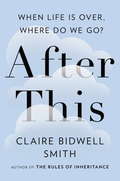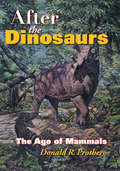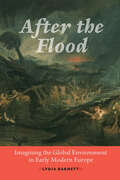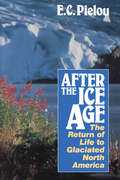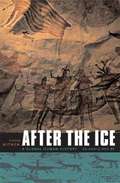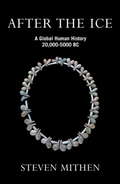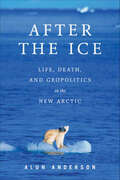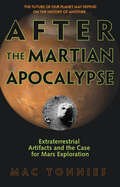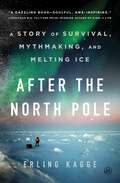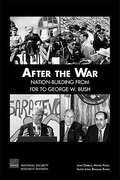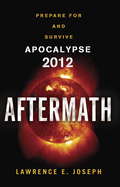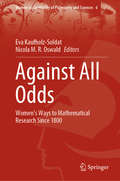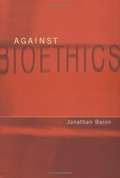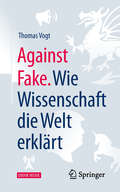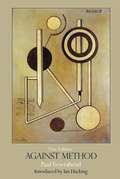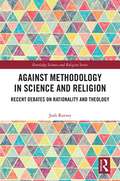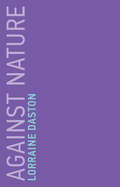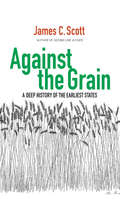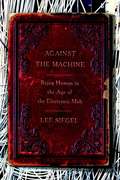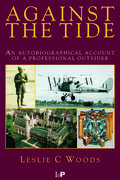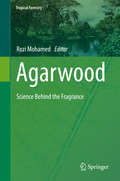- Table View
- List View
After This
by Claire Bidwell SmithIn After This, acclaimed author, and therapist Claire Bidwell Smith confronts the question she encounters every day in private practice--what happens after we die? In an exploration of the afterlife that is part personal, part prescriptive--Smith invites us on her journey into the unknown. She wonders: How do we grieve our loved ones without proof that they live on? Will we ever see them again? Can they see us now, even though they are gone?Chronicling our steps along the path that bridges this world and the next, Smith undergoes past-life regressions and sessions with mediums and psychics and immerses herself in the ceremonies of organized religion and the rigor of scientific experiments to try and find the answers. Drawing on both her personal losses, recounted in her memoir The Rules of Inheritance, as well as her background working in hospice as a bereavement counselor, Smith attempts to show how exploring the afterlife can have a positive impact on the grief process. personal journey that underlies the book's message: What we believe about what happens next affects everything about how we live--and love--right now.
After the Dinosaurs: Mammoths and Fossil Mammals (I Can Read Level 2)
by Charlotte Lewis BrownAfter the age of the dinosaurs, strange and powerful mammals ruled the earth. . . . Paleontologist Charlotte Lewis Brown’s easy-to-read and fascinating descriptions of these ancient animals are brought to life in Phil Wilson’s detailed illustrations. Read about the largest mammal ever to walk on land, about a tiger with teeth longer than your hand, and about a horse the size of a dog! Mammals—some strange and some strangely familiar—ruled the earth after the dinosaurs. These compelling creatures are introduced to beginning readers by the team who created The Day the Dinosaurs Died. After the Dinosaurs is a Level Two I Can Read, geared for kids who read on their own but still need a little help. Whether shared at home or in a classroom, the engaging stories, longer sentences, and language play of Level Two books are proven to help kids take their next steps toward reading success.
After the Dinosaurs: The Age of Mammals (Life Of The Past Ser.)
by Donald R. ProtheroA fascinating study of the thousands of new animal species that walked in the footsteps of the dinosaurs—and the climate changes that brought them forth. The fascinating group of animals called dinosaurs became extinct some 65 million years ago (except for their feathered descendants). In their place evolved an enormous variety of land creatures, especially mammals, which in their way were every bit as remarkable as their Mesozoic cousins. The Age of Mammals, the Cenozoic Era, has never had its Jurassic Park, but it was an amazing time in earth&’s history, populated by a wonderful assortment of bizarre animals. The rapid evolution of thousands of species of mammals brought forth many incredible creatures―including our own ancestors. Their story is part of a larger story of new life emerging from the greenhouse conditions of the Mesozoic, warming up dramatically about 55 million years ago, and then cooling rapidly so that 33 million years ago the glacial ice returned. The earth&’s vegetation went through equally dramatic changes, from tropical jungles in Montana and forests at the poles. Life in the sea underwent striking evolution reflecting global climate change, including the emergence of such creatures as giant sharks, seals, sea lions, dolphins, and whales. Engaging and insightful, After the Dinosaurs is a book for everyone who has an abiding fascination with the remarkable life of the past.
After the Flood: Imagining the Global Environment in Early Modern Europe
by Lydia BarnettHow the story of Noah's Flood was central to the development of a global environmental consciousness in early modern Europe.Winner of the Morris D. Forkosch Prize by the Journal of the History of Ideas, Short-listed for the Kenshur Prize by the Center for Eighteenth-Century Studies, Indiana UniversityMany centuries before the emergence of the scientific consensus on climate change, people began to imagine the existence of a global environment: a natural system capable of changing humans and of being changed by them. In After the Flood, Lydia Barnett traces the history of this idea back to the early modern period, when the Scientific Revolution, the Reformations, the Little Ice Age, and the overseas expansion of European empire, religion, and commerce gave rise to new ideas about nature and humanity, and their intersecting histories. Recovering a forgotten episode in the history of environmental thought, Barnett brings to light the crucial role of religious faith and conflict in fostering new ways of thinking about the capacity of humans and nature to change each other on a planetary scale. In the hands of Protestant and Catholic writers from across Europe and its American colonies, the biblical story of Noah's Flood became a vehicle for imagining the power of sin to wreck the world, the dangers of overpopulation, the transformative effects of shifting landforms on the course of human history, and the impact of a changing climate on human bodies, health, and lives. Following Noah's Flood as a popular topic of debate through long-distance networks of knowledge from the late sixteenth through the early eighteenth centuries, Barnett reveals how early modern earth and environmental sciences were shaped by gender, evangelism, empire, race, and nation. After the Flood illuminates the hidden role and complicated legacy of religion in the emergence of a global environmental consciousness.
After the Ice Age: The Return of Life to Glaciated North America
by E. C. PielouThe fascinating story of how a harsh terrain that resembled modern Antarctica has been transformed gradually into the forests, grasslands, and wetlands we know today. "One of the best scientific books published in the last ten years. "-Ottowa Journal "A valuable new synthesis of facts and ideas about climate, geography, and life during the past 20,000 years. More important, the book conveys an intimate appreciation of the rich variety of nature through time. "-S. David Webb,Science
After the Ice Age: The Return of Life to Glaciated North America (None Ser.)
by E.C. PielouThe fascinating story of how a harsh terrain that resembled modern Antarctica has been transformed gradually into the forests, grasslands, and wetlands we know today.
After the Ice: A Global Human History 20,000-5000 BC
by Steven MithenArchaeology says present day humans have been on the planet for eighty thousand years. The first writing has been dated to 3,500 BC. This is what humanity may have been during from 20,000 to 5,000 BC, during the period of global warming which followed the last great ice age. The author uses archaeology to talk about humans at various times during this period of time and at various places on the planet. This book is about what life may have been like day to day over a fifteen thousand year period before we learned to write and live in cities.
After the Ice: A Global Human History, 20,000 - 5000 BC
by Prof Steven MithenA fantastic voyage through 15,000 years of history that laid the foundations for civilisation as we know it by award-winning science writer Steven Mithen.Twenty thousand years ago Earth was in the midst of an ice age. Then global warming arrived, leading to massive floods, the spread of forests and the retreat of the deserts. By 5,000 BC a radically different human world had appeared. In place of hunters and gatherers there were farmers; in place of transient campsites there were towns. The foundations of our modern world had been laid and nothing that came after - the Industrial Revolution, the atomic age, the internet - have ever matched the significance of those events. AFTER THE ICE tells the story of climate change's impact during this momentous period - one that also saw the colonisation of the Americas and mass extinctions of animals throughout the world. Drawing on the latest cutting-edge research in archaeology, cognitive science, palaeontology, geology and the evolutionary sciences, Steven Mithen creates an evocative, original and remarkably complete picture of minds, cultures, lives and landscapes through 15,000 years of history.
After the Ice: A Global Human History, 20,000 - 5000 BC
by Steven MithenA fantastic voyage through 15,000 years of history that laid the foundations for civilisation as we know it by award-winning science writer Steven Mithen.Twenty thousand years ago Earth was in the midst of an ice age. Then global warming arrived, leading to massive floods, the spread of forests and the retreat of the deserts. By 5,000 BC a radically different human world had appeared. In place of hunters and gatherers there were farmers; in place of transient campsites there were towns. The foundations of our modern world had been laid and nothing that came after - the Industrial Revolution, the atomic age, the internet - have ever matched the significance of those events. AFTER THE ICE tells the story of climate change's impact during this momentous period - one that also saw the colonisation of the Americas and mass extinctions of animals throughout the world. Drawing on the latest cutting-edge research in archaeology, cognitive science, palaeontology, geology and the evolutionary sciences, Steven Mithen creates an evocative, original and remarkably complete picture of minds, cultures, lives and landscapes through 15,000 years of history.
After the Ice: Life, Death, and Geopolitics in the New Arctic
by Alun AndersonNew from Smithsonian Books, After the Ice is an eye-opening look at the winners and losers in the high-stakes story of Arctic transformation, from nations to native peoples to animals and the very landscape itself. Author Alun Anderson explores the effects of global warming amid new geopolitical rivalries, combining science, business, politics, and adventure to provide a fascinating narrative portrait of this rapidly changing land of unparalleled global significance.
After the Martian Apocalypse: Extraterrestrial Artifacts and the Case for Mars Exploration
by Mac TonniesPart exo-archaeological treatise and part cultural commentary, After The Martian Apocalypse is an uncompromising and groundbreaking perspective on a cosmic controversy that has perplexed scientists and astronomers for years. Here, Mac Tonnies details the latest Mars discoveries and their paradigm-toppling implications, offering strong new evidence that points to an extinct civilization on the Red Planet -- and explaining how our own survival may depend on confronting the strange and ancient truths to be found there. Facing the prospect of a previous intelligent extraterrestrial civilization, Tonnies portrays Mars as a scientific and cultural conundrum. He challenges orthodox notions of mankind's role in space -- and illuminates the imperative concept that to truly understand our own world, we must first understand our unsettling and enigmatic planetary neighbor.
After the North Pole: A Story of Survival, Mythmaking, and Melting Ice
by Erling KaggeThe Norwegian explorer, philosopher and acclaimed writer tells of his historic 58-day journey to the North Pole on skis in this provocative memoir that is a profound meditation on nature and the history of explorers' obsession. The North Pole looms large in our collective psyche—the ultimate Otherland in a world mapped and traversed. It is the center of our planet’s rotation, one of the places that is most vulnerable in an epoch of global climate change. Its sub-zero temperatures and strange year of one sunset and one sunrise make it an eerie, utterly disorienting place that challenges human endurance and understanding.Erling Kagge and his friend Børge Ousland became the first people “to ever reach the pole without dogs, without depots and without motorized aids,” skiing for 58 days from a drop off point on the ice edge of Canada’s northernmost island.Erling describes his record-making journey, probing the physical challenges and psychological motivations for embarking on such an epic expedition, the history of the territory’s exploration, its place in legend and art, and the thrilling adventures he experienced during the trek. It is another example of what bestselling author Robert MacFarlane has called “Kagge’s extraordinary life in wild places,”Erling also observes the key role that this place holds in our current climate and geopolitical conversations. As majestic, mesmerizing, and monumental as the terrain it captures, After the North Pole is for anyone who has gazed out at the horizon—and wondered what happens if you keep going.After the North Pole is illustrated with 12-14 photographs.Translated from the Norwegian by Kari Dickson.
After the War: Nation-building from FDR to George W. Bush
by James Dobbins Austin Long Michele A. Poole Benjamin RunkleFrom the post-World War II era through the Cold War, post-Cold War era, and current war on terrorism, this volume assesses how U.S. presidential decisionmaking style and administrative structure can work in favor of, as well as against, the nation-building goals of the U.S. government and military and those of its coalition partners and allies.
Aftermath: A Guide to Preparing for and Surviving Apocalypse 2012
by Lawrence E. JosephWhat can we do to mitigate the coming cataclysm? Here Joseph presents the latest findings about the threats to our life on earth including an all-out collapse of power grids and satellite systems resulting from solar flares expected to climax with unprecedented ferocity in 2012. Incipient plagues, famines, droughts and runaway global warming are also assessed for their catastrophic potential. When it comes to formulating a response to an impending apocalypse, the field of options is narrow, but Joseph argues that there is plenty of constructive action that can be taken at the personal, local, national, and global level, individually and collectively, to prepare for, endure and emerge from disaster.
Against All Odds: Women’s Ways to Mathematical Research Since 1800 (Women in the History of Philosophy and Sciences #6)
by Eva Kaufholz-Soldat Nicola M. R. OswaldThis book presents an overview of the ways in which women have been able to conduct mathematical research since the 18th century, despite their general exclusion from the sciences. Grouped into four thematic sections, the authors concentrate on well-known figures like Sophie Germain and Grace Chisholm Young, as well as those who have remained unnoticed by historians so far. Among them are Stanisława Nidodym, the first female students at the universities in Prague at the turn of the 20th century, and the first female professors of mathematics in Denmark. Highlighting individual biographies, couples in science, the situation at specific European universities, and sociological factors influencing specific careers from the 18th century to the present, the authors trace female mathematicians’ status as it evolved from singular and anomalous to virtually commonplace.The book also offers insights into the various obstacles women faced when trying to enter perhaps the “most male” discipline of all, and how some of them continue to shape young girls’ self-perceptions and career choices today. Thus, it will benefit scholars and students in STEM disciplines, gender studies and the history of science; women in science, mathematics and at institutions, and those working in mathematics education.
Against Bioethics
by Jonathan BaronGovernments, health professionals, patients, research institutions, and research subjects look to bioethicists for guidance in making important decisions about medical treatment and research.
Against Ecological Sovereignty: Ethics, Biopolitics, and Saving the Natural World (Posthumanities)
by Mick SmithAgainst Ecological Sovereignty is a passionate defense of radical ecology that speaks directly to current debates concerning the nature, and dangers, of sovereign power. Engaging the work of Bataille, Arendt, Levinas, Nancy, and Agamben, among others, Mick Smith reconnects the political critique of sovereign power with ecological considerations, arguing that ethical and political responsibilities for the consequences of our actions do not end with those defined as human.Against Ecological Sovereignty is the first book to turn Agamben&’s analysis of sovereignty and biopolitics toward an investigation of ecological concerns. In doing so it exposes limits to that thought, maintaining that the increasingly widespread biopolitical management of human populations has an unrecognized ecological analogue—reducing nature to a &“resource&” for human projects. Smith contends that a radical ecological politics must resist both the depoliticizing exercise of sovereign power and the pervasive spread of biopolitics in order to reveal new possibilities for creating healthy human and nonhuman communities.Presenting a stinging critique of human claims to sovereignty over the natural world, Smith proposes an alternative way to conceive of posthumanist ecological communities—one that recognizes the utter singularity of the beings in them.
Against Fake. Wie Wissenschaft die Welt erklärt
by Thomas VogtDie moderne Wissenschaft ist ein faszinierendes Instrument zur Gewinnung von Erkenntnissen über Natur und Kultur. Ihre Ergebnisse sind zwar nicht frei von Widersprüchen, aber den meisten anderen Arten, Wissen zu erzeugen, überlegen. Das liegt an bestimmten Regeln, über die sich Wissenschaftler verständigt haben. Ein zentrales Prinzip von Wissenschaft ist Transparenz. Der Weg zum Wissen soll für alle nachvollziehbar sein, die bereit sind, sich in einen bestimmten Wissensbereich einzuarbeiten. Debatten um Fake News und Alternative Fakten zeigen, wie wichtig transparent erzeugtes Wissen ist. Dabei kann nicht genug betont werden, dass die moderne Wissenschaft als Reaktion auf Aberglauben und Fake entstanden ist. Einen Einstieg in das Thema Wissenschaft zu finden ist schwer, denn das Prinzip der Transparenz darf leider nicht mit Verständlichkeit gleichgesetzt werden. Ziel des Buches ist es, die Idee von Wissenschaft auch Lesern ohne Vorkenntnisse näherzubringen.
Against Method
by Paul FeyerabendPaul Feyerabend's globally acclaimed work, which sparked and continues to stimulate fierce debate, examines the deficiencies of many widespread ideas about scientific progress and the nature of knowledge. Feyerabend argues that scientific advances can only be understood in a historical context. He looks at the way the philosophy of science has consistently overemphasized practice over method, and considers the possibility that anarchism could replace rationalism in the theory of knowledge. This updated edition of the classic text includes a new introduction by Ian Hacking, one of the most important contemporary philosophers of science. Hacking reflects on both Feyerabend's life and personality as well as the broader significance of the book for current discussions.
Against Methodology in Science and Religion: Recent Debates on Rationality and Theology (Routledge Science and Religion Series)
by Josh ReevesSince its development as a field over the last part of the twentieth century, scholars in science and religion have been heavily concerned with methodological issues. Following the lead of Thomas Kuhn, many scholars in this interdisciplinary field have offered proposals that purport to show how theology and science are compatible by appropriating theories of scientific methodology or rationality. Arguing against this strategy, this book shows why much of this methodological work is at odds with recent developments in the history and philosophy of science and should be reconsidered. Firstly, three influential methodological proposals are critiqued: Lakatosian research programs, Alister McGrath’s "Scientific Theology" and the Postfoundationalist project of Wentzel van Huyssteen. Each of these approaches is shown to have a common failing: the idea that science has an essential nature, with features that unite "scientific" or even "rational" inquiry across time or disciplines. After outlining the issues this failing could have on the viability of the field, the book concludes by arguing that there are several ways scholarship in science and religion can move forward, even if the terms "science" and "religion" do not refer to something universally valid or philosophically useful. This is a bold study of the methodology of science and religion that pushes both subjects to consider the other more carefully. As such, it will be of great interest to scholars in religious studies, theology and the philosophy of science.
Against Nature (Untimely Meditations #17)
by Lorraine DastonA pithy work of philosophical aMassachusetts Institute of Technologynthropology that explores why humans find moral orders in natural orders.Why have human beings, in many different cultures and epochs, looked to nature as a source of norms for human behavior? From ancient India and ancient Greece, medieval France and Enlightenment America, up to the latest controversies over gay marriage and cloning, natural orders have been enlisted to illustrate and buttress moral orders. Revolutionaries and reactionaries alike have appealed to nature to shore up their causes. No amount of philosophical argument or political critique deters the persistent and pervasive temptation to conflate the “is” of natural orders with the “ought” of moral orders.In this short, pithy work of philosophical anthropology, Lorraine Daston asks why we continually seek moral orders in natural orders, despite so much good counsel to the contrary. She outlines three specific forms of natural order in the Western philosophical tradition—specific natures, local natures, and universal natural laws—and describes how each of these three natural orders has been used to define and oppose a distinctive form of the unnatural. She argues that each of these forms of the unnatural triggers equally distinctive emotions: horror, terror, and wonder. Daston proposes that human reason practiced in human bodies should command the attention of philosophers, who have traditionally yearned for a transcendent reason, valid for all species, all epochs, even all planets.
Against the Grain: A Deep History of the Earliest States
by James C. ScottAn account of all the new and surprising evidence now available for the beginnings of the earliest civilizations that contradict the standard narrative Why did humans abandon hunting and gathering for sedentary communities dependent on livestock and cereal grains, and governed by precursors of today’s states? Most people believe that plant and animal domestication allowed humans, finally, to settle down and form agricultural villages, towns, and states, which made possible civilization, law, public order, and a presumably secure way of living. But archaeological and historical evidence challenges this narrative. The first agrarian states, says James C. Scott, were born of accumulations of domestications: first fire, then plants, livestock, subjects of the state, captives, and finally women in the patriarchal family—all of which can be viewed as a way of gaining control over reproduction. Scott explores why we avoided sedentism and plow agriculture, the advantages of mobile subsistence, the unforeseeable disease epidemics arising from crowding plants, animals, and grain, and why all early states are based on millets and cereal grains and unfree labor. He also discusses the “barbarians” who long evaded state control, as a way of understanding continuing tension between states and nonsubject peoples.
Against the Machine: Being Human in the Age of the Electronic Mob
by Lee SiegelThe new situation doesn't represent the lack of community suddenly produced by the Internet. That is the hackneyed complaint made, again and again, by people who don't seem to have thought through the unlovely aspects of community- its smug provincialism and punitive conventionalism, its stasis and xenophobia- which was in any case jeopardized and transformed by the advent of modernity two hundred years ago. The simple fact is that sometimes you don't want the quiet conformities induced by community; sometimes you simply want to be alone, yet together with other people at the same time. The old-fashioned cafe provided a way to both share and abandon solitude, a fluid, intermediary experience that humans are always trying to create and perfect. The Internet could have been its fulfillment. But sitting absorbed in your screen world is a whole other story. You are socially and psychologically cut off from your fellow caffeine addicts, but mentally beset by e-mails, commercial pop-ups, and a million temptations that may enchant in the moment- aimed as they are at your specific and immediate interests and desires -but in retrospect are time-wasting ephemera.
Against the Tide: An Autobiographical Account of a Professional Outsider
by L.C WoodsIn Against the Tide: An Autobiographical Account of a Professional Outsider, Leslie Woods relates the fascinating story of his life from fisherman's son in New Zealand to head of the Mathematical Institute at the University of Oxford. After starting at a trade school, he won a scholarship to a university, then joined the RNZAF, and later became a fighter pilot in the Pacific. Following WWII, Woods won a Rhodes scholarship to Merton College in Oxford. He has held positions at the University of New South Wales, Oxford's Balliol College, and Culham Laboratory. Besides recounting his history, Woods explains why magnetic fusion has failed to succeed and outlines the philosophy of science to which he subscribes.
Agarwood: Science Behind the Fragrance (Tropical Forestry)
by Rozi MohamedThis book gives readers new information to understand the mechanism of agarwood induction and therefore eradicate the myths surrounding agarwood formation. One of the challenges in conserving agarwood resources is species identification. In this book, taxonomy and systematics of agarwood-producing trees from historical and recent perspectives is discussed, and tips are given for identifying cultivated species. In addition, color illustrations are given to highlight vegetative and reproductive characteristics as well as anatomical features, for identification purposes of both plant and agarwood sources. Another challenge that planters are facing is in acquiring the correct method for agarwood induction, thus development of agarwood induction technologies will be reviewed. A chapter dedicated to bioinduction is included. The book will comprise a chapter on the use of non-destructive technology as a management tool for cultivating agarwood. The book also discusses issues relating to agarwood grades. The absence of an international standard that is acceptable by producer and consumer countries further complicates the issue. Other useful information includes a systematic revelation of agarwood constituents and their complex chemistry, and highlights on a specific pharmaceutical property.
